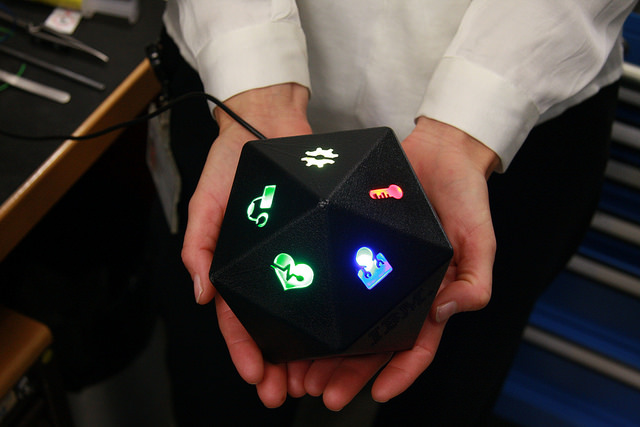From an innocent bystander’s perspective, it might seem like Americans are spending more and more time at home. For people who telecommute, aging seniors, or freelance entrepreneurs, home base is fast-becoming synonymous with the office. Part of the reason for this is all the recent advancements in technology that allow teams to engage in virtual meetings, conference calls, and online team building.
It used to be more common for adult children to admit their aging parents into nursing homes. However, as cost-of-living and health care expenses continue to skyrocket, consumers are demanding more sustainable and cost-effective options. Let’s take a closer look at a few specific examples of those options, from flexible and remote work to the Internet of Things, and how they relate to the Age-in-Place movement.
The New Remote Workplace
The office of the future increasingly looks as if it will resemble a home office. The major reason for this has to do with logistics. It’s becoming increasingly unnecessary for all workers to work from the same centralized location at the same time, due to the online nature of things. From Google Docs to Slack to virtual conferencing, team members are mostly required to be in the same time zone, rather than simply the same place, at any given time. Employees can sign documents and time cards remotely, as well as check in with their team members and collaborate on documents together—all online.
Migration to cloud-based accounting, time management, and human resources software makes the transition to online management all-the-more efficient, and the current state of e-commerce is such that many maintain side jobs that evolve into full-time work, after retirement from their day jobs. According to Intuit, almost four million employees work remotely for at least half of their work-week. That’s a much more significant portion of the workforce than was common just ten years ago.
IoT and the Age-in-Place Market
As ECN reported last December, IBM’s Watson will soon power robots designed to assist caregivers and the elderly, at home. The reality of what we see and use in our homes on a daily basis, however, probably won’t be quite so luxurious or futuristic. Instead, IoT devices such as smart sensors, heart monitors, and smart home devices are poised to become driving forces in the market catering to the coming “silver tsunami.” Considering the fact that, by the year 2060, nearly a quarter of the population will be composed of individuals aged 65 or older, the term ‘tsunami’ is probably an understatement.
In order to meet the demand for technology that will allow older people to remain full-time residents in their homes for as long as possible, the “Age-in-Place” technology market aims to meet the demand. There is already an increase in smart home devices, remodeling services, and retrofitting designed to adapt to the needs of increasingly tech-savvy seniors who may be losing physical mobility but still wish to live independently. The home remodeling, “age-in-place” market for retirees and baby boomers is likely to grow, as 87 percent of seniors would prefer to continue living at home for as long as possible.
Kitchens, bathrooms, and entranceways are a few major areas for possible reorganization. For example, since falls are the most prevalent cause of death for people aged 65 or older, ‘smart’ lighting enabled by motion sensors would be useful, as well as automatic shut-off options for kitchen appliances. Other alterations include accessible door handles and eye-level cabinetry and appliances for the wheelchair bound, as well as automatic temperature controls, accessible bathrooms equipped with grip bars, higher toilets, and walk-in bathtubs or showers.
Standout Devices & Future Trends
What’s at the root of these advancements in technology, besides innovative breakthroughs in science, web development, and IT? The answer is twofold: the demand for both greater convenience and increased independence. These motivations have inspired entrepreneurs to create apps and devices addressing these concerns, and recent changes in economic growth are inspiring aging baby boomers to demand more realistic options.
For example, The Economist recently profiled the private residence of Dolf Honée of the Netherlands, whose house is equipped with eight sensors connected to an app that communicates with his adult children if anything seems out of the ordinary—all without the use of cameras. The future of smart homes, however, will likely be more evolved than sensors or wearables. For example, ear devices may be able to more accurately track sleep patterns and other vital signs, refrigerators could offer meal suggestions, and pill dispensers could be smart and automated.
In short, both senior living facilities and smart homes will have more capability to be retrofitted to accommodate home Wi-fi and IoT-connected devices—often via connected apps. Many of these devices are tied to tracking physical health and activity patterns. For example, a recent study at a retirement community, undertaken with the University of Missouri’s College of Engineering, utilized “analytics in order to correlate changes in gait with falls.” By doing this, they were able to detect mobility issues via sensors weeks before resulting in a fall—preventing a great deal of injuries, in the process.
Ongoing needs in this market will include cybersecurity, privacy, affordability, and convenience. Privacy is a huge concern for baby boomers, and affordability is also crucial to whether or not a product will become popular on the market or merely remain a niche item for a select few. Another question is whether insurance will be able to help fund any of these connected devices. If so, it would be a great boon to the industry and potential entrepreneurs and marketers of such products.
AI and IoT technology are the bottom line when it comes to the future of work and home life. The question is, how will innovators and entrepreneurs answer the call, and how will our healthcare and insurance systems adapt to the changes? The silver tsunami is coming. Are you prepared to avoid being swept away by the waves?


